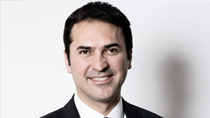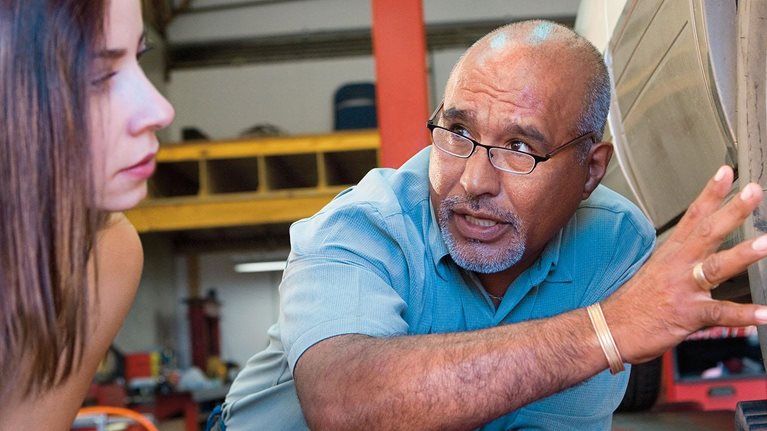“When we are talking about growth engines, the main push is coming from customer centricity,” says Firuzan Iscan, head of customer and distribution experience at German insurer Allianz. With 85 million customers worldwide, that’s a tall order to fill. But as part of a corporate renewal strategy launched two years ago, Allianz has worked to move from a process-oriented “inside out” mentality to an “outside in” mind-set geared toward customer service. In 70 projects spanning 24 corporate entities in the first year, the effort spawned a rethinking of digital strategy and corporate culture. Iscan recently sat down with McKinsey’s Harald Fanderl to describe the journey.
McKinsey: How and when did you realize customer experience should be a priority for Allianz?
Firuzan Iscan: When Oliver Bäte became our CEO, he introduced our renewal agenda. True customer centricity was in the middle of five renewal-agenda initiatives, and actually we started from this point to think about how we can build a customer-centric organization and how we can improve customer satisfaction. In the first year, we launched 70 customer-journey improvement projects in 24 entities.
Stay current on your favorite topics
McKinsey: As an insurer, why is it so important to start from a customer point of view?
Firuzan Iscan: Because as a financial institution we used to think more from an internal perspective, an inside-out perspective. At Allianz, I think we had a proven record for managing processes efficiently. We built a very efficient mechanism to serve our customers, but actually customers don’t experience the processes; they are experiencing the journey, so that’s why we changed our perspective from process into journey. I think in this changing environment, in order to be ready for future challenges, we need to put our customers in the middle, and we need to change our perspective to outside-in.
McKinsey: What goals have you set for this strategy?
Firuzan Iscan: We want our customers to promote us because we are serving them; we want to be a partner in their lives. And we also need to understand what the impact of customer satisfaction will be, so that’s why we are measuring our customers’ willingness to recommend us. We are linking customer-satisfaction improvement with business impact through this willingness to recommend in two ways. The first, of course: once a customer becomes loyal, he or she tends to retain his or her policies with us. The second way: through new promoters, we can gain more new customers. In many cases, we are also observing cost reduction, because the solutions we are offering to our customers remove some steps from their journeys. For example, in call centers, when you avoid repetitive calls, it means that you can save call-center costs, and also, of course, your agents, your intermediaries, will not deal with similar problems.

The CEO guide to customer experience
McKinsey: How do you mobilize the organization behind the goals that you described, about becoming more customer oriented?
Firuzan Iscan: I think that’s the most challenging subject, because it’s not one function’s responsibility in the organization. It’s a common purpose, so then we are talking about internalization of customer centricity. Of course, we need to involve more people, we need to change the mind-set, and it’s not an easy task. When we are talking about, for example, customer-experience management, all these measurements, projects, et cetera, it’s just maybe 5 to 10 percent of the main task. So 90 percent is about culture, and that’s why through these projects and through all these initiatives we want to involve more people in the organization; we want to include all stakeholders. We are asking our entities to build cross-functional teams for customer-experience projects. We are asking journey owners that lead the projects and cross-functional teams coming from different parties in the organization to support this project, so the main mobilizer I can point to is cross-functional teams. And when the CEOs, the executive teams commit on these initiatives, then we can expect more from cross-functional teams.
McKinsey: What has your approach to digitization been?
Firuzan Iscan: One of our renewal-agenda items is digital by default, but it’s not just digitization of our processes. We want to start again from our customers. We need to understand what customers expect from us—what are their requirements, what are their needs—so that’s why we are using a customer-experience exercise in order to better understand our customers’ needs. This helps us develop solutions, digital solutions, so when we invest in a digital tool or a set, we know that our starting point is customer needs, and we are serving through this digital tool to better serve our customers.
McKinsey: How do you scale that on a global basis for such a large organization?
Firuzan Iscan: Three years ago, in Allianz Turkey, we introduced a digital agency and digital customer program, part of our digitization initiative. Before starting these digital programs, we executed customer-experience and distribution-experience projects in order to better understand what customers are expecting from us. For example, especially in Turkey, we are leading health insurance, we are the leader also in motor insurance, and we are in the top three in pensions. When we are talking about digital tools, of course everybody first thinks about mobile applications. We did not start to develop mobile applications. We started to analyze customer journeys first: health-claims journey, pension-communication journey, and motor-claims journeys, and we identified some pain points. We used these digital assets as a solution and to engage more with our customers and also to help them through their journey.
For our agents we did the same. Before developing the solution, we first analyzed journeys of our agents in different lines of businesses, and then we defined the pain points and also the positive moments and prioritized them in order to create impactful solutions. Then we developed digital tools, and then we tested them with our agents. Globally now we are using the same approach. We are executing many customer-experience projects in different countries. Of course, we can develop some local solutions, but also we are using these insights to develop global digital solutions through our global digital factory. The participant entities are coming to Munich, and they are contributing to the development of some global digital tools for specific journeys.
McKinsey: What have you learned about measuring customer experience?
Firuzan Iscan: We used to measure top-down customer-satisfaction scores (CSS) in many countries within Allianz, but it was not easy to use these measures and to translate them into actions. We developed a single methodology, we are using the same questionnaire everywhere, and now we are measuring globally top-down satisfaction, including also journey satisfaction. Now what we are doing, we are measuring globally again top-down customer satisfaction, but consistent in all countries. We know our relative position in the market, and we know in which countries, in which lines of business, in which journeys we need to work together. So this is the main difference. Now we know how we can use these insights and how we can translate them into action.
McKinsey: What kind of impact have you seen from your efforts so far?
Firuzan Iscan: I think the most important thing is that we’ve started to change the company. When we introduced our customer-centricity initiative two years ago, it was not clear for many people, but now we have a common understanding of our main purpose, of our aim. We know we are speaking the same language. I think this is one of the main improvements for us. Also, we are building capabilities all around the world through customer-experience projects, for market research, for project management, and measurement and customer-experience methodology and the culture. I think these are the early successes for Allianz.
McKinsey: What challenges have you come up against?
Firuzan Iscan: In a little more than a year in 24 entities, we have had almost 70 projects going on. I can say that we are running all these projects, we are designing solutions, but when we come to the implementation, it’s not easy. I think we need to involve more business owners in order to implement faster. This is one of the main learnings from last year. Of course, we are using cross-functional teams, but we need to give leadership, project-management leadership, to business owners to involve them more and also to accelerate implementations. When we think from the customer perspective, most of our customers are hybrid customers. They are starting in online, and they prefer an offline purchasing experience. So that’s why when we consider the journey end to end, we need to always take care of online and offline moments of this journey. We cannot just focus on online or offline.
McKinsey: And going forward?
Firuzan Iscan: We learned globally how we should collaborate, how we should manage customer-experience projects, and also how we should build solutions. But our main challenge is changing the mind-set. We will continue to work on this subject. Leadership is very important; we need to also communicate frequently to engage our employees, and we need to act as customer-centric individuals in the organization, all of us.
We are now trying to turn this wheel, and then every country, once they’ve built their own capabilities and they digest customer centricity, they will run their business this way. I hope we will succeed in a very short time and customer centricity will be part of our DNA. We will not just say that we are customer-centric or we want to be more customer-centric. It will be part of our DNA, and then we will think of other things.



